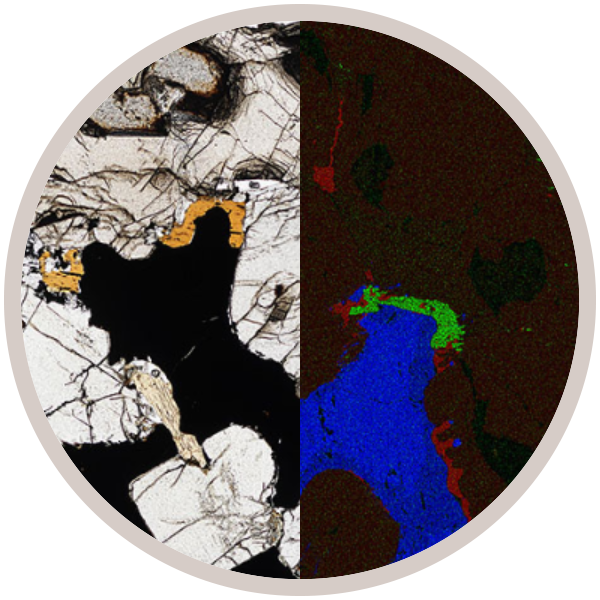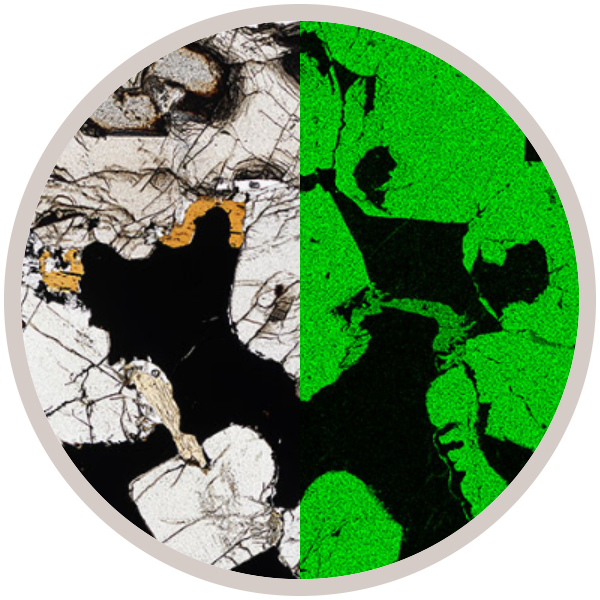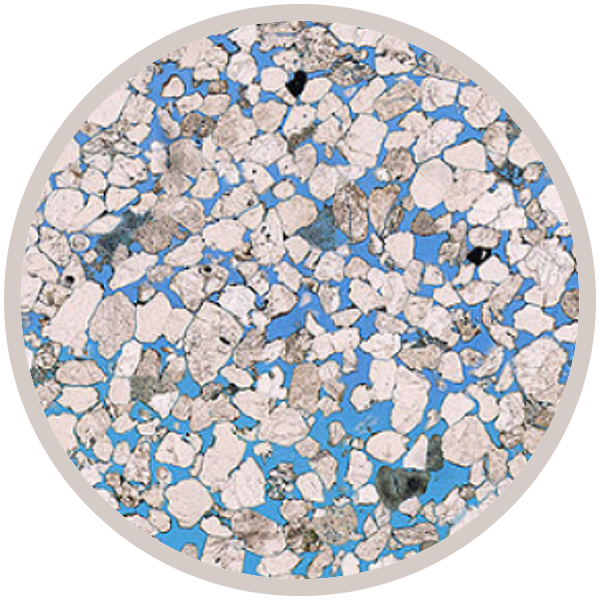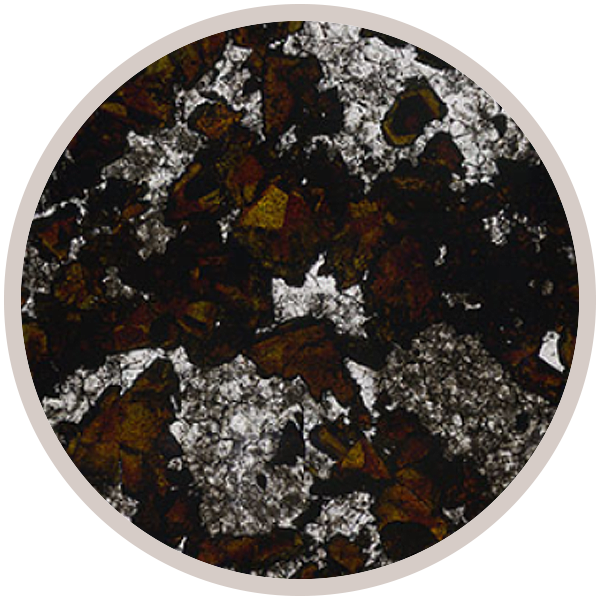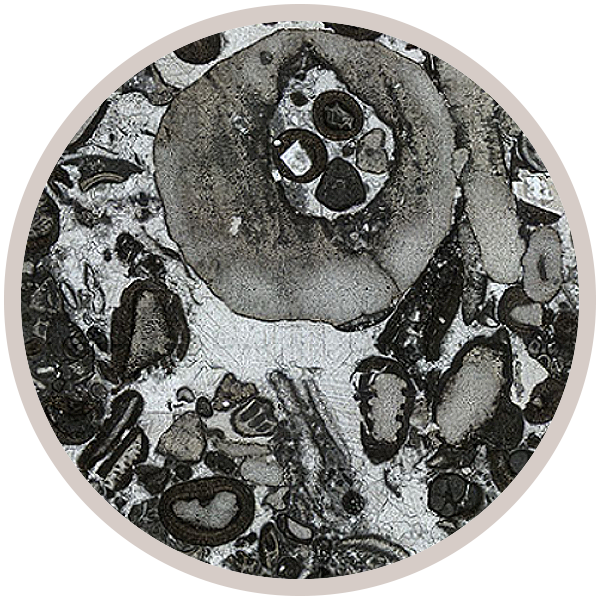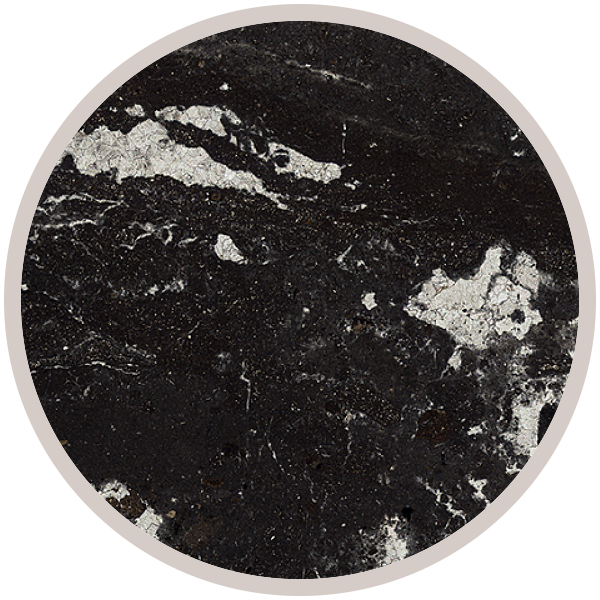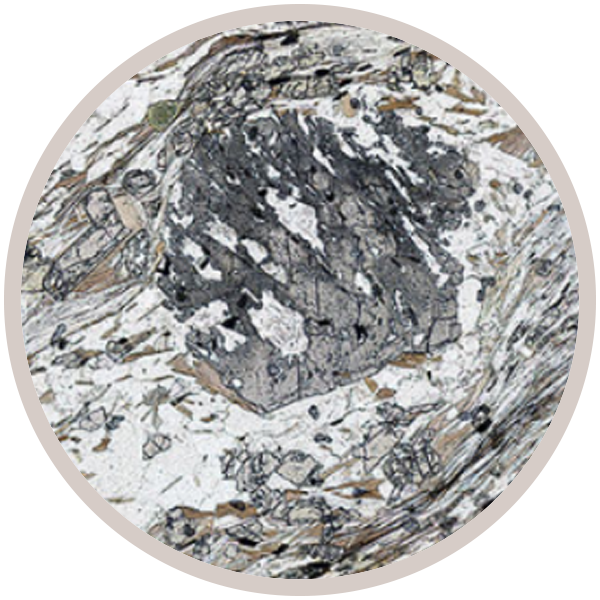
Fact sheet
This pelite (garnet staurolite schist) is from within the staurolite zone of the Connemara Dalradian Supergroup. The staurolite crystals commonly grow transverse to the schistosity, and so grew after it had developed. The garnet, in contrast, is augened by the schistosity, and so grew earlier. Crenulations may appear in quartz inclusion trails within the garnet porphyroblasts, showing that two phases of deformation had occurred before the garnet grew.
The Dalradian rocks of Connemara lie to the south of the Highland Boundary Fault (which crosses Ireland from Fair Head to Clew Bay), so it appears that late faulting shunted the Connemara terrain southwards from its original position (north of the HBF) to its present location.
(Thin section is contaminated with carborundum)
Rotation 1 - Three nice staurolite crystals, with good yellow pleochroism. Biotite and muscovite.
Rotation 2 - Muscovite deformed around garnet.
Rotation 3 - Augened garnet in muscovite and biotite, and ‘late’ staurolite pleochroic, tiny tourmaline.
A group of iCRAG members (UCC, TCD, NUIG and UCD) in partnership with The Open University have created a new collection of Irish rocks and associated learning materials for the Virtual Microscope of Earth Sciences.
The project which is entitled 'The Geoscience e-Laboratory (GeoLab): Developing Digital Teaching and Learning Resources for the Virtual Microscope' seeks to develop open access teaching resources in the form of interactive exercises and assessment rubrics for the Virtual Microscope. Find out more about the project at the GeoLab website.
The Collection was created using funding from the Faculty of Engineering, Mathematics and Science at Trinity College, Dublin, and the National Forum Teaching and Learning Enhancement Fund. One sample (Merensky Reef) showcasing x-ray element maps in addition to the usual PPL/XPL/REF images was funded by Prof. Balz Kamber's MetalIntelligence EU training network grant.

